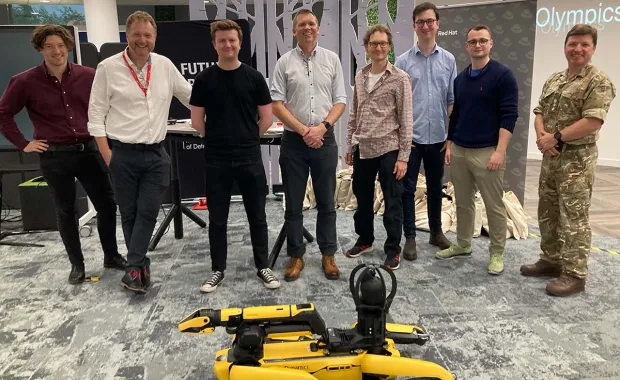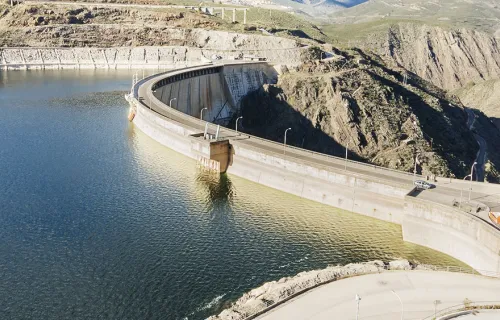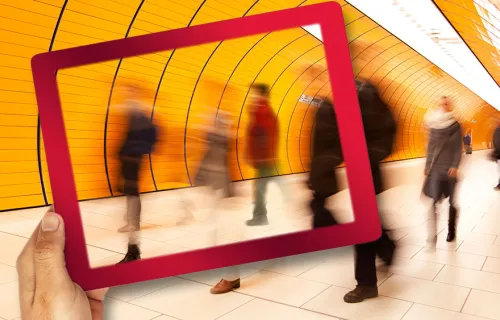Earlier this year, CGI members Kurt Hill and Carl Robinson were invited to take part in a Robot Dog Olympic Hackathon. The event was held in the Innovation Bridge, at the Ministry of Defence’s (MoD) Abbey Wood site in Bristol, where around 40 coders from various technology companies assembled to take part. Earlier in the year, the Future Capabilities Group (FCG), part of the Defence Equipment and Support section of the MoD, purchased four Spot mobile robots from Boston Dynamics.These quadruped robots, descendants of the original BigDog project, are already making their way into practical industrial use, and the FCG were keen to investigate their potential; this, despite the dystopian warnings of a certain Black Mirror episode everyone quotes when seeing a Spot.
This was an exciting, blank-slate programming opportunity to explore what could be achieved in a collaborative environment, wrapped up in an Olympics-style set of challenges consisting of 50m sprints, drawing Olympic rings, curling, and gymnastics. There were also additional excavation and learn-and-select events to attempt, and the invitees were split into four teams to undertake the six challenges.
Each robot came equipped with an arm and 360°-camera-and-Infrared payloads and a remote-control device for manual manoeuvring control. Teams got to work studying the application programming interface (API) and developing Python code that utilised the available commands in their robot’s software development kit (SDK). The tasks were made more challenging by command-set limitations and the sparsity of examples. This required some innovation in software development, abstracting a set of core operations to a base class that objects could then utilise when tackling each Olympic challenge. Docker was also employed early on to create a container to enable operating-system independent control of the robot.
Throughout the two days, the control, mobility, object detection, and manipulation capabilities of Spot were tested and demonstrated, resulting in some rapid trotting, speculative artwork, dynamic choreography, knocked-over skittles, and the odd crushed plastic ball here and there. All to the near-constant hum of Torvill and Dean’s 1984 gold-medal ice dancing calling card.
The event enabled FCG, in collaboration with Team Defence Information, to assess the non-offensive potential of the four-legged technology, for activities such as search, tracking, and equipment/medical delivery into dangerous areas - All with the benefit of reducing the risk to the life of soldiers in the field.
CGI’s Patrick Hutchings, Senior VP of Secure Innovation and Advisory, says:
The Robot Dog Olympic challenge provided an opportunity to showcase CGI talent and our ability to seamlessly collaborate with a wider team. Working with Defence on mission-aligned innovation is a huge motivator and it’s a vital part of the MoD’s industry-engagement strategy. At CGI we’re operating at the forefront of bringing emerging technology innovation to our clients right across Defence.
Find out more about how CGI is leading the way for Defence and Intelligence, enabling secure and reliable operations.






